Sweeping, scrubbing and removing cobwebs from each stall is a ritual at Jill Girardi-Thomas’ Franklin, Tenn., barn. But all this cleaning is not just about presenting a spotless environment to her riding students and other visitors. It’s all about keeping her horses healthy and barns and pastures pest-free.
Keeping unwanted pests out of pastures, paddocks and barns is a challenge for most horse owners. That’s because raccoons, opossums, snakes, mice, bats and birds each represent unique threats to horses. Keeping them out of places horses reside is key. So is understanding each threat, believes Karen McCormick, DVM, DACVIM, assistant professor of Equine Medicine at the College of Veterinary Medicine at the University of Tennessee at Knoxville. According to McCormick, here are the some of the critters horse owners need to keep out of their pastures and barns, and why.
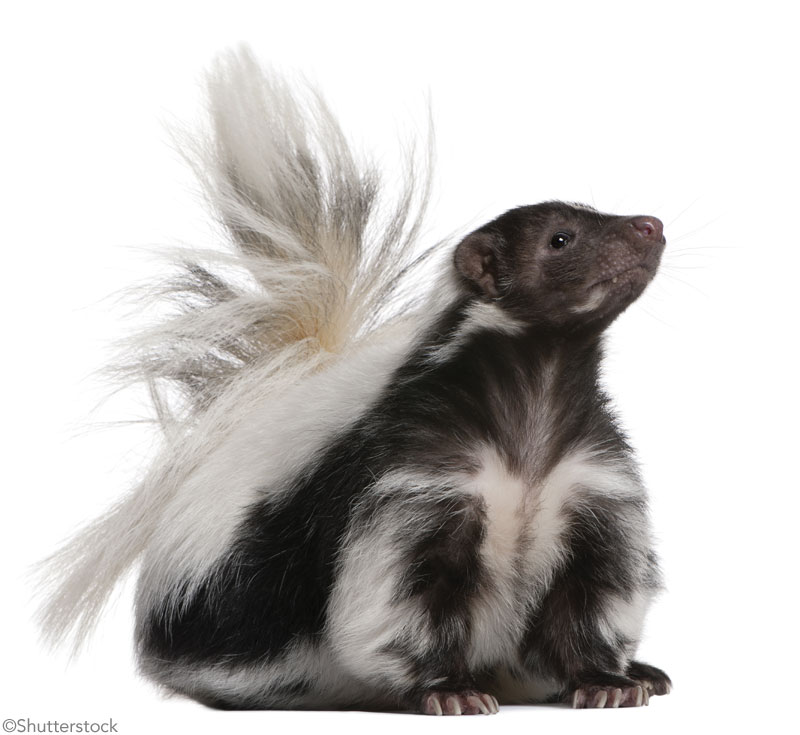
Raccoons, Foxes, Bobcats, Coyotes & Skunks
Each of these animals is drawn to pastures where ground cover—weeds or high grass—is plentiful, says McCormick. These unwanted animals are also drawn to barns seeking shelter from extreme cold or inclement weather. Most are impossible to detect as they frequently invade at night and leave little sign of their arrival or departure.
RISK TO HORSES:
All of these critters expose horses to rabies. According to the University of Kentucky Agricultural Extension Service, symptoms of rabies in horses include depression, a low-grade fever, convulsions, lameness, gnawing at the site of an injury and diminished appetite. Though rabies in horses is relatively rare, the disease is always fatal, McCormick says.
PREVENTION:
The American Association of Equine Practitioners (AAEP) vaccination guidelines recommend that adult horses receive an initial single-dose rabies vaccine and an annual booster. Foals born to vaccinated mares should receive an initial dose of vaccine no earlier than at 6 months of age and a second dose four to six weeks later, followed by annual vaccination. Foals of mares not vaccinated against rabies should receive a first dose of vaccine at 3 or 4 months of age, and should be revaccinated annually.
Keeping pastures well-mowed and relatively weed-free deprives raccoons, foxes, bobcats and other unwanted pests of hiding places. Inside the barn, keeping things tidy also makes it less inviting for them to take up residence.
Opossums
These nocturnal critters nest in hollow trees or take over dens abandoned by other animals. The real threat to horses from opossums lies in their role as carriers of a parasite that causes a serious neurological disease, equine protozoal myeloencephalitis (EPM). The protozoal parasite Sarcocystis neurona that causes EPM is found in intermediate hosts such as raccoons, armadillos, cats and skunks. Opossums acquire the parasite by feeding on the carcasses of these dead animals. The parasite matures to an infective stage within the opossum and is passed out in the feces. Horses then can ingest the parasite by grazing or consuming water resources located where opossums have defecated.
RISK TO HORSES:
In horses, EPM causes lesions in the brain or central nervous system. Symptoms may vary from horse to horse, McCormick says, but EPM-infected horses generally display muscle weakness or lack of coordination. EPM can be fatal in some horses.
McCormick says that EPM is difficult to diagnose because it mimics other conditions, such as lameness. Early EPM is treated with antiprotozoal drugs. However, EPM may cause long-term damage to a horse’s nervous system. Even if the disease is both diagnosed and treated early, horses can suffer after-effects of the disease throughout their lives. There is no EPM vaccine currently available, McCormick says. As a result, disease prevention through good property management is the best option.
PREVENTION:
Locating and disposing of dead animals—especially raccoons—is key, McCormick says.
Live animals such as raccoons and opossums may be humanely trapped and relocated well away from farms and horse pastures, advises McCormick. Typically this may be several miles away. Local extension agents can provide advice and best practices for trapping and relocating live animals.
In the barn, secure hay and feed storage areas to keep opossums out. Store feed in critter-proof containers. Sweep up spilled feed and avoid leaving out pet food and garbage that can attract scavenging opossums.
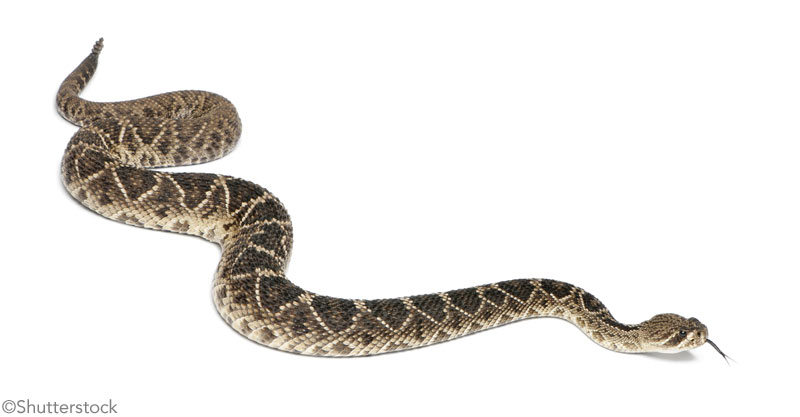
Snakes
Unless horse owners come into direct contact with snakes, it is difficult to spot them in the pasture or in the barn. Still, these creatures do pose dangers to horses. “I do worry about snakebites in parts of the country where poisonous snakes are found,” says McCormick.
RISK TO HORSES:
Rattlesnakes, water moccasins and copperheads all threaten horses with poisonous bites. Horses may encounter snakes in their pastures or paddocks where owners would never detect them. However signs of snakebite can include swelling and pain at the bite site, McCormick says. Horses may also sustain injuries, including hemorrhage, cardiac episodes, shock and death.
Horses may incur snakebites by stepping on snakes in the pasture. More often, however, horses are bitten on the nose.
“Most horses are curious and are likely to sustain a snakebite on the nose from investigating where snakes reside,” says McCormick.
PREVENTION:
When it comes to outdoor pastures and paddocks, horse owners who live in parts of the country where poisonous snakes are found should consult with local extension services and veterinarians to determine what kind of reptiles may invade the horses’ spaces. Learn to identify the snakes in your area, particularly venomous ones. In barns, sweep up loose hay and grain, and store feed in securely covered containers. Avoid having rock piles, wood piles, brush and other places where snakes may seek warmth. Keep boards, lumber, scrap metal and roofing materials away from barns and paddocks for your horse’s safety as well as discouraging snakes. Mow grass and trim shrubbery and heavy brush in these areas as well. Fill in the gaps under sheds and buildings where snakes like to hide with boards, bricks or cinderblocks. Finally, controlling rodents will eliminate an attractive food source for snakes.
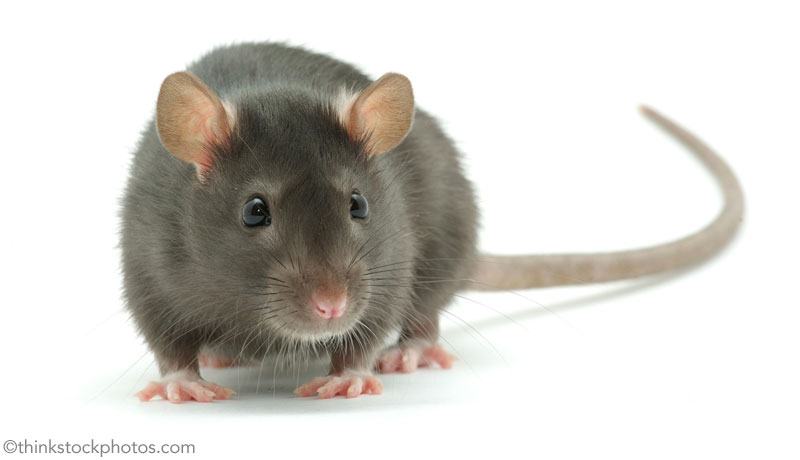
Mice & Rats
Few barns are spared from mouse infestation. These rodents—along with rats—take up residence in barns when they seek feed, warmth and water. At minimum they spread disease, and at worst they risk horses’ lives by causing barn fires.
RISKS TO HORSES:
“Most rats and mice carry the Salmonella bacteria,” McCormick says. Salmonellosis—more commonly known as salmonella—is a bacterial infection contracted by horses orally though tainted feed or water, contaminated feed or water buckets, or though grooming tools infected with the bacteria. In horses, the bacteria may cause watery diarrhea, weakness or lethargy.
Like horses, humans that come into contact with contaminated feed, water, tools or even infected horses risk sickness from salmonella.
But a salmonella infestation is only one risk to horses and their owners. Mice and rats often cause fires where horses are housed.
“Rodents can chew on electrical wires, igniting hay and other combustibles that are in the barn,” says Craig Gillis, Fire Marshall and Fire Department Assistant Chief in Allen, Texas.
Most of the time, a mouse infestation can be detected by small, black droppings found on barn surfaces, including stall shelves or near food and water.
“That’s part of the reason why we make sure to look for mouse droppings when we clean stalls and water buckets,” says Girardi-Thomas.
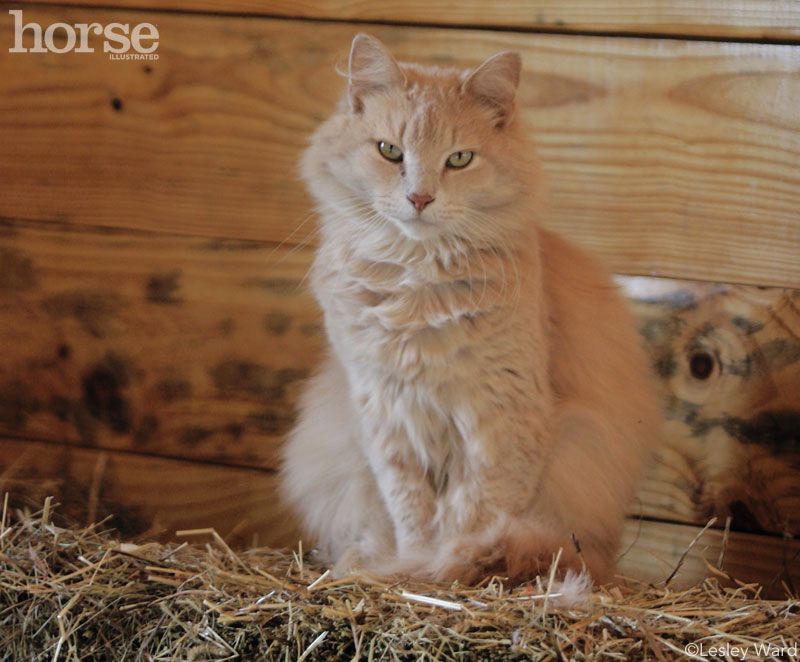
PREVENTION:
Both Girardi-Thomas and McCormick recommend storing feed in covered containers, and regularly cleaning water buckets. In addition, McCormick advises horse owners to introduce a cat—or even a dog—to their barn environments.
Owners can use dogs and cats to keep mice and rats from their barns, but traps are also effective if your mousers can’t keep up with the rodent population, says Krishona Martinson, Ph.D., Equine Extension Specialist for the University of Minnesota. Martinson also recommends contacting local extension offices or exterminators for best practices in eliminating a massive rodent infestation.
Encase exposed electrical wiring in the barn in metal conduit pipe. This prevents both mice and horses from chewing on it, Martinson says. She advises checking local building codes for barns, which will have specifications for wiring and fire prevention. Installing and updating wiring is a job best left to the professionals. Have a licensed electrician inspect your barn’s wiring to ensure that it is safe.
Bats & Birds
Though bats and birds keep insect populations at bay in barns, their droppings can pose specific risks to horses, McCormick says.
“Both bats and birds keep the insect population down—including the insects than cause Potomac Horse Fever (PHF), found in 40 states and Canada, when they wind up in a horse’s water source,” says McCormick. “But droppings from bats and birds present their own problems.”
RISK TO HORSES:
According to McCormick, both bats and birds may defecate in barns near horses’ feed and water. As a result, those sources can become contaminated with a range of pathogens, including salmonella and certain fungal diseases. One of these is cryptococcosis, a brain and spinal cord condition that occurs in both humans and horses resulting from the dust of dried wild bird droppings. Symptoms include headache, cough, shortness of breath and fever.
Rabies virus is transmitted through saliva or nervous system tissue, and occurs from the bites of bats or other rabid animals. While rabies is fatal in horses, humans bitten by a rabid bat or other animal should seek medical attention immediately.
PREVENTION:
Clean stalls regularly and monitor feed and water buckets for bird droppings, advises McCormick. Store feed in covered containers to avoid bird dropping contamination.
McCormick also tells horse owners to shut off barn lights at night. “This way you can avoid attracting birds and bats in the first place,” she says.
Martinson believes that barn cats with access to hay lofts and other spaces are a good way to rid barns of birds.
“Horse owners can also use plastic owls to discourage birds and bats,” says Martinson. “Some are even automated to hoot.”
Pasture Patrol
It is difficult, if not impossible, to keep every unwanted critter from taking up residence in a pasture where horses also reside. It is especially difficult to keep pastures critter-free if horses are not brought in from those pastures on a daily basis. Either way, Martinson believes it’s better to keep unwanted varmints out of pastures in the first place. To accomplish this, she recommends that horse owners start by practicing good pasture management.
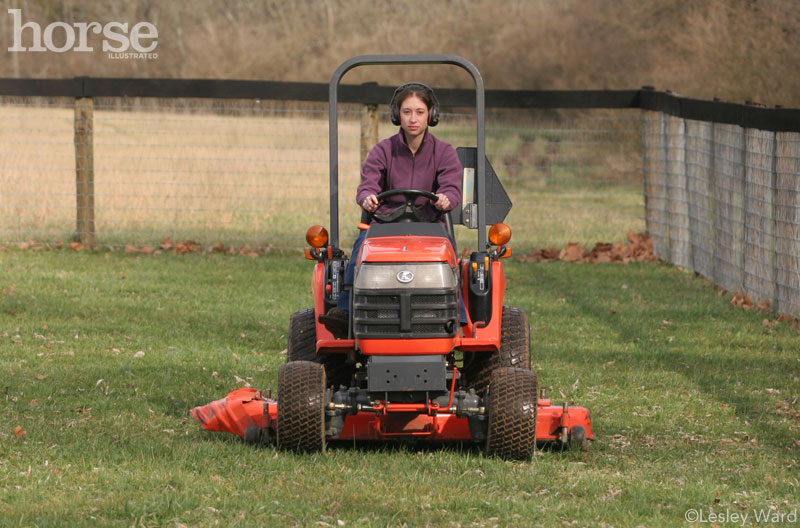
MOW, MOW, MOW:
First, she says, you should mow. According to Martinson, skunks, moles, raccoons and snakes all like spots where ground cover is lush and hiding places are plentiful. Eliminate those hiding places, and you can reduce the chances that your pastures will be invaded by unwanted creatures.
“If you keep pastures well-mowed, anything that would need a hiding place will not find one,” she says.
WEED AND FEED:
Likewise, Martinson recommends keeping your pastures as weed-free as possible. The absence of weeds reduces ground cover and eliminates places unwanted critters may hide. Good grass growth can choke out weed proliferation, so include a combination of weed control and fertilization in your pasture management program.
FENCE CREATIVELY:
Most horse owners use fencing materials to keep their horses in their paddocks or pastures. However, Martinson points out that you can also use fencing materials to keep unwanted visitors out.
According to Martinson, weeds that create preferred hiding spots for some unwanted critters grow close to the ground. She recommends installing fencing material about 6 to 8 inches above ground level to keep invaders out.
“If you have an electrified wire on your pasture fence, just run a wire low—about 6 to 8 inches off the ground—to keep raccoons and other pests out,” she says.
You can also use poultry netting or metal chicken wire to thwart opossums and other large animals.
“Bury the chicken wire in the ground so its top end reaches 6 to 8 inches above ground level,” says Martinson. “It’s especially useful if you have a small enough pasture.”
She also recommends borrowing a page from gardeners’ books when it comes to natural measures intended to keep pests out of pastures and barns. Among those is the use of coyote urine sprayed along the perimeter of pastures, paddocks and barns.
“Of course, you have to reapply the coyote urine if you have a good rainfall,” says Martinson.
Ultimately, Martinson emphasizes, keeping pastures and areas around paddocks and barns neat and tidy is key. That means keeping wood piles, scrap metal and other clutter away from your horses’ living quarters.
“All of this debris gives mice and other animals a place to hide,” Martinson says.
Learn more about which specific unwanted animals are prevalent in your area and how to discourage them by contacting your local extension service (locate it at www.csrees.usda.gov/extension).
PATRICE D. BUCCIARELLI is a freelance writer based in Florida.
This article originally appeared in the April 2014 issue of Horse Illustrated magazine. Click here to subscribe!



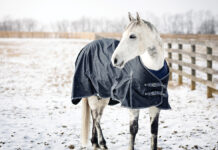
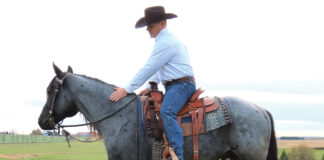

Such great tips!! We have live traps, (baited) set each night. Also keep cats for rodents control. I try to keep things clean. Even snakes, help control mice and rats. But we do not have poisonous snakes here.
It would have been good if the article had mentioned that most wild animals are protected by law, and that their populations are often in danger (such as some species of bats, and many birds). Consequently, any removal or discouragement of wildlife around stables should take these things into consideration. Especially for endangered wildlife, it is illegal to disturb their nesting or roosting places (as in the case of bats).